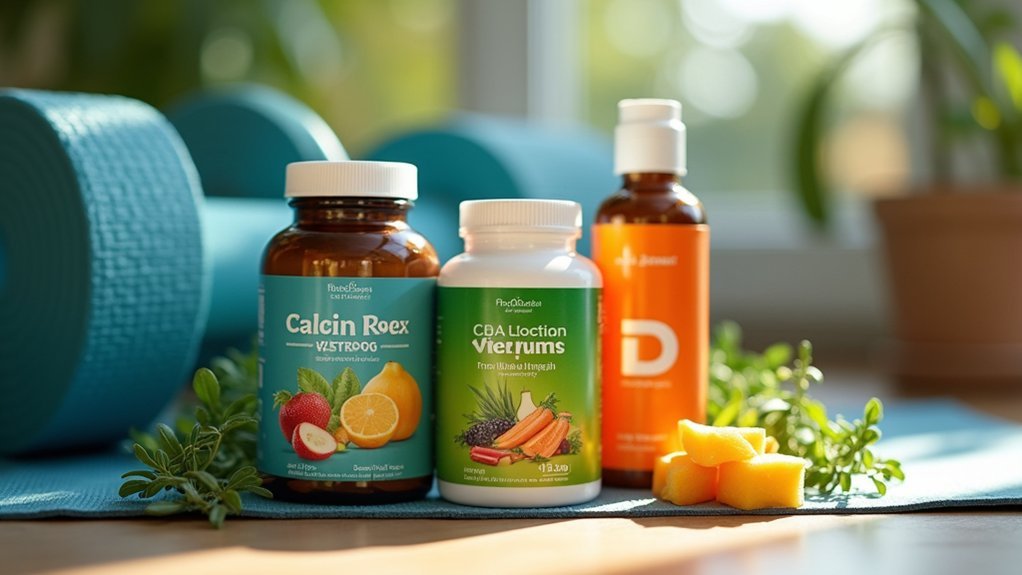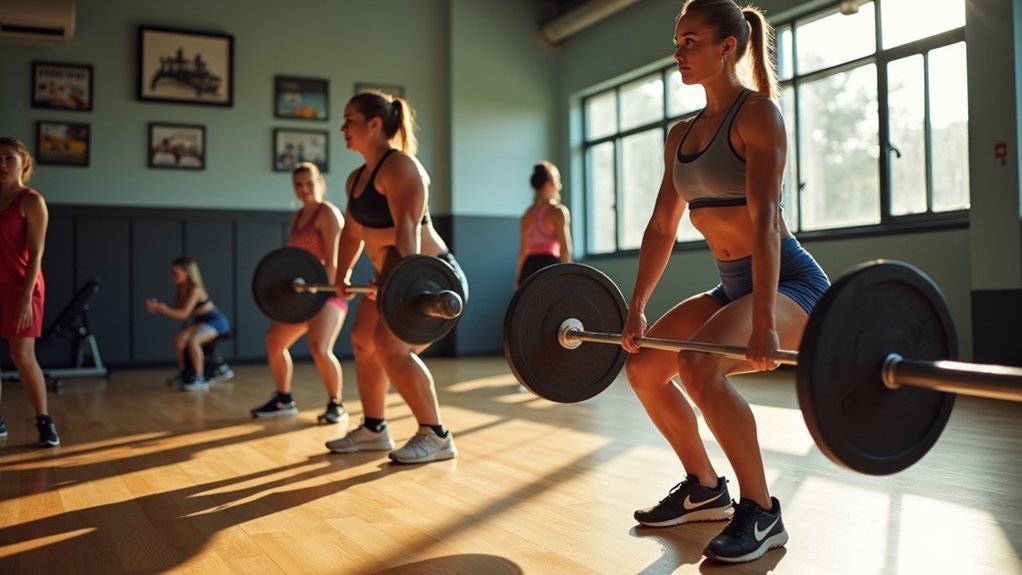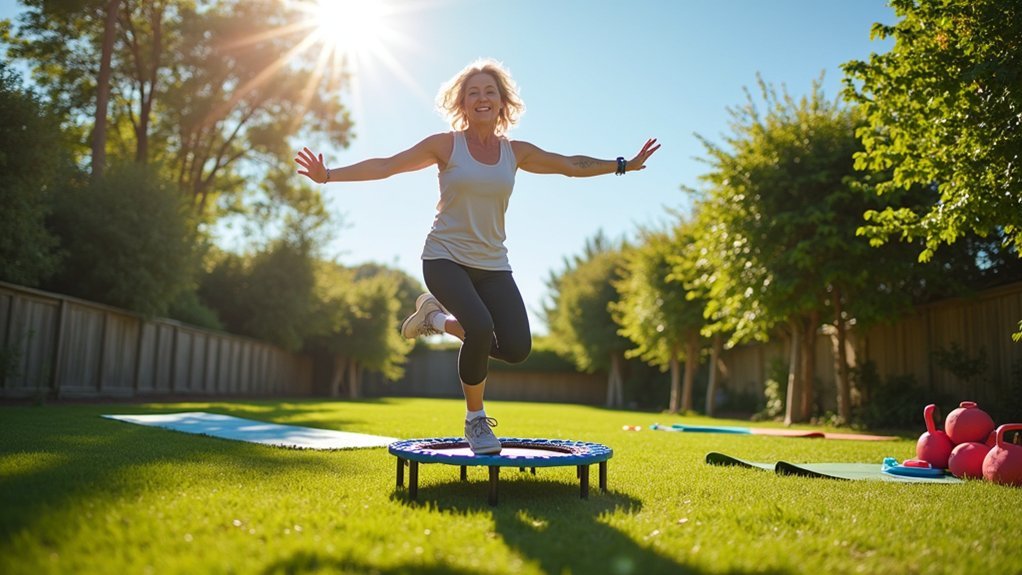When strengthening your bones through exercise, focus on three key supplements: calcium (1,000-1,200mg daily) for bone structure, vitamin D (800-1,000 IU) for calcium absorption, and magnesium (300-400mg) for supporting bone formation and muscle function. You’ll maximize exercise benefits by taking calcium with vitamin D to enhance absorption, while magnesium complements both. These nutrients work synergistically to build stronger bones while you stay active. Discover how these supplements specifically support rebounding exercises below.
Essential Minerals That Maximize Bone Density During Rebounding

Rebounding exercises offer a unique opportunity to strengthen your bones while minimizing joint impact. To maximize these benefits, you’ll need specific minerals that support bone density.
Calcium is foundational, requiring 1,000-1,200 mg daily depending on your age. Without vitamin D (800-1,000 IU for those over 50), your body can’t properly absorb this calcium—they’re inseparable partners in fighting osteoporosis.
Magnesium (300-400 mg daily) works behind the scenes supporting both bone structure and muscle function during physical activity.
Don’t overlook vitamin K, which activates osteocalcin, the protein that binds calcium to your bones. B vitamins (B6, B9, and B12) complement these supplements by regulating homocysteine levels that could otherwise weaken healthy bones.
The right supplement regimen enhances the bone-strengthening benefits you’re already getting from your rebounding routine.
Vitamin Combinations That Enhance Skeletal Strength While Bouncing
While bouncing on a rebounder, your bones undergo micro-stresses that stimulate growth—but only if you’ve got the right vitamin combinations in your system.
To maximize this benefit, pair vitamin D with vitamin K2, which work together to direct calcium precisely where it’s needed—into your bones, not your arteries.
Don’t overlook vitamin C’s role in collagen production, essential for maintaining bone flexibility during high-impact movements.
Adding magnesium supports healthy muscles, preventing cramps that might interrupt your bouncing routine.
Meanwhile, vitamin B12 boosts osteoblast activity, critical for new bone formation.
For thorough bone health and reduced risk of osteoporosis, incorporate vitamins B6, B9, and K into your supplements regimen.
Targeted Supplements for Post-Rebound Bone Recovery

After your bouncing session ends, your body’s recovery phase begins—a key window for supporting bone restoration. Your post-exercise recovery routine should include targeted supplements that strengthen your skeletal system and enhance bone density.
- Pair calcium supplements with vitamin D to maximize absorption and support overall bone health.
- Include magnesium to complement calcium and promote muscle recovery while supporting bone structure.
- Add vitamin K2 to activate osteocalcin, the protein responsible for directing calcium to your bones.
- Combine vitamin C with collagen supplements to strengthen bone matrix and accelerate healing.
- Incorporate B vitamins, especially B12 and B9, to regulate homocysteine levels and reduce fracture risk.
These strategic supplement combinations create an ideal environment for bone recovery after high-impact exercises, ensuring your skeleton rebuilds stronger with each workout.
Frequently Asked Questions
What Is the Best Supplement to Strengthen Bones?
Calcium with vitamin D is your best bone-strengthening supplement. It’s essential for bone density, with adults needing 1,000-1,200 mg daily. Pairing it with vitamin K2 and magnesium enhances absorption and effectiveness.
Can You Strengthen Bones With Exercise?
Yes, you can strengthen your bones through exercise. Weight-bearing activities like walking, strength training, and jumping stimulate bone formation. Doing these exercises regularly improves bone density and reduces your risk of osteoporosis.
Why Should Calcium and Vitamin D Not Be Taken Together?
You shouldn’t take calcium and vitamin D together because calcium can inhibit vitamin D absorption in your intestines. To maximize benefits, space out these supplements by taking them at different times of the day.
Is It Better to Take Magnesium or Calcium for Bones?
You’ll need both magnesium and calcium for ideal bone health. Neither is “better” alone—calcium forms bone structure while magnesium helps with calcium absorption and activation of vitamin D. They work best together.
In Summary
You’ll see the most benefits by combining calcium with vitamin D and magnesium during your rebounding routine. Don’t forget that consistency is key—take these supplements regularly while maintaining your exercise schedule. Your bones will thank you as they grow stronger with each bounce. Remember, these aren’t just supplements; they’re investments in your skeletal health that pay lifelong dividends.




Leave a Reply